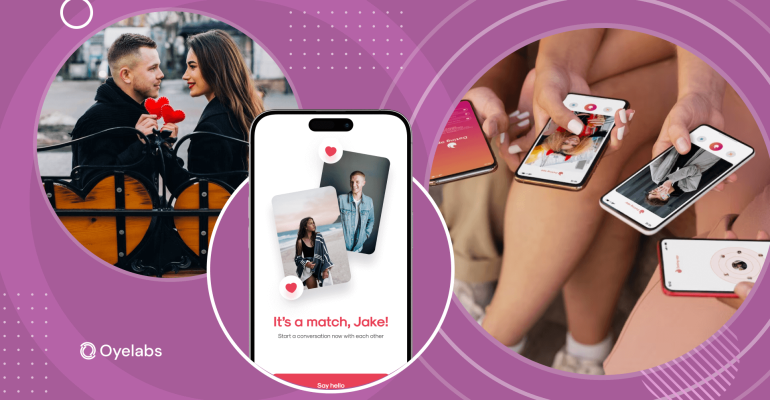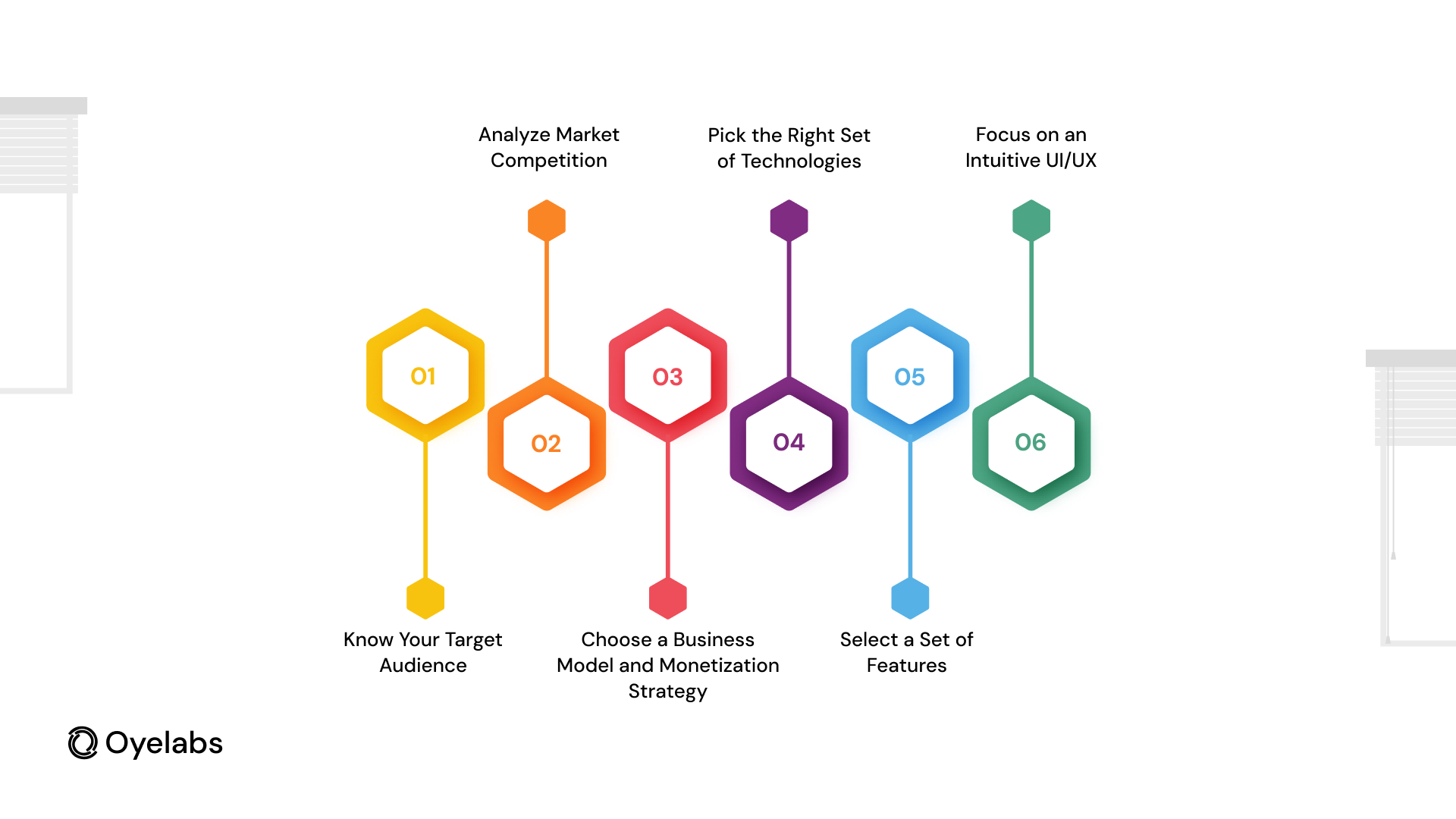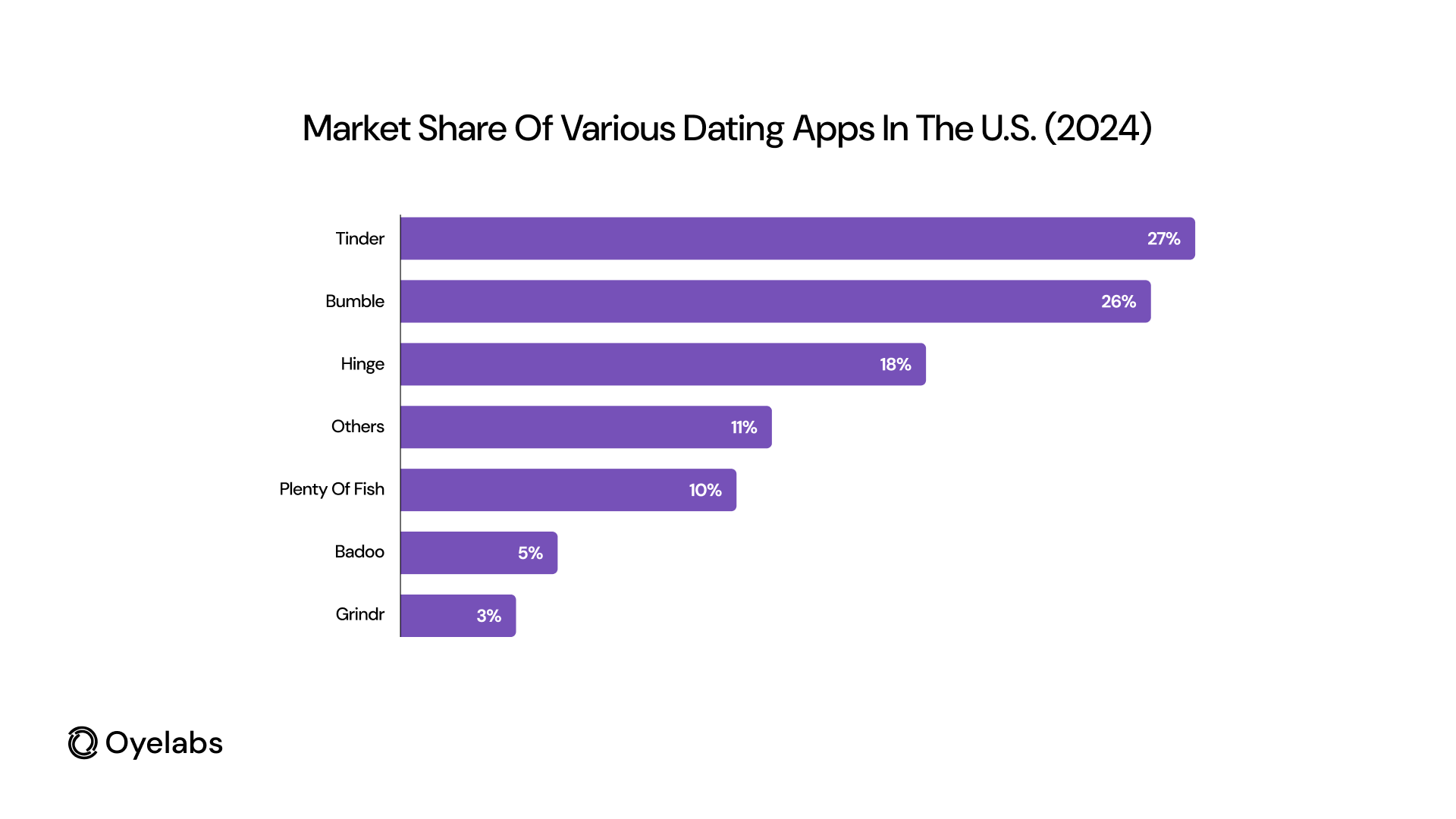How to Create a Successful Dating App: A Step-by-Step Guide

How to Create a Successful Dating App: A Step-by-Step Guide
Last Updated on October 11, 2024
What if you could create the next big dating app that changes how people connect? In a world where swiping has become second nature, apps like Tinder and Bumble have opened up new possibilities for finding love, friendship, and everything in between. The dating services industry is expected to achieve an impressive $8.15 billion by 2024, offering an excellent chance to tap into this dynamic market. Sure, it may feel like the market is flooded with options, but what if you have a unique concept that could change the game? The truth is, there’s always room for innovation. The desire for connection remains as strong as ever, and the right app can resonate with users seeking more meaningful interactions.
If you’ve been considering building your own dating app, this guide is your roadmap. We’ll walk you through the key steps to develop a platform that not only captures attention but thrives in a competitive market. Ready to bring your idea to life and help people find their perfect match? Let’s get started!
A Step-by-Step Guide on How to Create a Dating App

To become the next Tinder-like app owner or to improve upon existing dating apps, you need to be ready for challenges. Let’s discuss some essential processes for creating a dating app.
Step 1: Know Your Target Audience
Step 2: Analyze Market Competition
It is crucial to conduct a comprehensive analysis of the competition in the crowded dating app market to identify opportunities. In 2024, it was reported that approximately 30% of adults in the U.S. were actively using dating apps, indicating their significant presence in everyday life. The dominant player in this market, Tinder, is recognized for capturing about 40% of the market share with its user-friendly swipe feature and diverse appeal. Bumble is noted for allowing women to initiate conversations and holds around 20% of the market, while Hinge, focused on serious relationships, accounts for approximately 15% of the market share.
Indirect competitors, such as social media platforms, should also be evaluated. The strengths, weaknesses, user interfaces, and unique selling propositions (USPs) of these competitors will be assessed. By identifying market gaps and unmet user needs, a dating app can be developed to offer unique features or cater to underserved demographics, enhancing its competitive advantage.
Step 3: Choose a Business Model and Monetization Strategy
Defining a clear business model early on is critical for shaping your dating app’s features and revenue potential. Common monetization strategies include the freemium model, where basic app access is free, but premium features require a subscription. In-app purchases, such as virtual gifts or boosted profiles, can provide additional revenue streams. Advertising can also be integrated, but it should not detract from user experience.
If you’re interested in learning how successful dating apps implement these strategies, check out our blog on Revenue Models of Popular Dating Apps for deeper insights. Carefully consider your monetization strategy to ensure it provides value to users while maintaining a sustainable revenue model, fostering long-term user engagement and loyalty.
Step 4: Pick the Right Set of Technologies
The technology stack is a fundamental aspect of your dating app’s development, significantly impacting its performance and scalability. Select programming languages suited to your target platforms; Swift for iOS and Kotlin for Android are popular choices. A reliable database, such as PostgreSQL or MySQL, is necessary for managing user data effectively. Your tech stack should also encompass cloud services for storage and hosting, with options like Amazon Web Services. Additionally, ensure robust user authentication through social logins to enhance security. By choosing the right tech stack, you set the foundation for a high-performing and user-friendly app.
Here’s a table to present the key components of the tech stack for developing a dating app:
Tech Stack Components |
iOS |
Android |
| Programming Language | Swift, Objective-C | Kotlin, JavaAndroid Studio |
| OS | iOS 12+, watchOS, tvOS | Android 10, Lollipop |
| Database | PostgreSQL, MySQL | PostgreSQL, MySQL |
| IDE | Xcode | Android Studio |
| SDK | iOS SDK, Cocoa Touch | Android SDK |
| Web Server | Nginx, Apache | Nginx, Apache |
| Cloud Storage | Amazon S3, Heroku | Amazon S3, Heroku |
| Payments | Stripe, Braintree, PayPal | Stripe, Braintree, PayPal |
Step 5: Select a Set of Features
Choosing the right features is essential for creating an engaging dating app that meets user expectations. Begin with core functionalities like user profiles, which should allow for comprehensive personal information and preferences. Effective matching algorithms are vital for pairing users based on shared interests and geographical proximity. Real-time chat functionality fosters communication, enhancing relationship-building. Consider unique features, such as video profiles or icebreaker questions, to differentiate your app. Prioritize user safety with profile verification and reporting tools. A balance of essential and innovative features will enhance user experience and retention.
Also Read: The Future of Dating Apps – Emerging Trends
Step 6: Focus on an Intuitive UI/UX
Launch Your Dating Platform with Oyelabs in No Time
Developing a dating app can be challenging, but Oyelabs is here to simplify the process. As a trusted dating app development company, we understand the hurdles you might face, especially when trying to create something as successful as Tinder
From day one, we provide comprehensive support, guiding you from the initial concept to the final launch. Our team focuses on designing user-friendly apps that are engaging and easy to navigate, helping users connect seamlessly. We also prioritize robust security to ensure user safety is always a top priority. What sets us apart is our commitment to keeping your app relevant in an ever-changing market. With Oyelabs, you can confidently enter the dating app space, knowing you have a reliable partner dedicated to your success.
Conclusion
Creating a dating app can be both exciting and rewarding. By following the key steps—understanding your target audience, analyzing market competition, selecting the right business model, choosing the right technologies, and focusing on engaging features—you can build a platform that truly stands out in a crowded market.
Are you ready to take the next step in bringing your dating app idea to life? Reach out to Oyelabs today to discuss your vision. Let us help you transform your concept into a successful reality, connecting people in meaningful ways!





Comments (3)
john
looking for help develop a dating app
Anurag Jain
Sure john, please reach to out to us on grow@oyelabs.com with your requirements and our expert team will surely help you!
Enock
It’s was nice